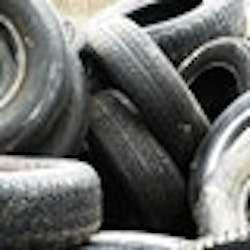Rubberized asphalt is cooling Phoenix streets
Rubberized asphalt, applied to Valley freeways to minimize noise, has an unintended benefit: It's cooler at night than other pavement, according to the Arizona Republic.
That's because air holes constitute 20 % of rubberized asphalt, said Kamil Kaloush, an assistant professor of civil and environmental engineering. Those pockets of air allow heat to escape, something that dense concrete can't do.
At nighttime, when the heat island takes its toll, this might make rubberized asphalt a wiser choice, Kaloush said. But it isn't the answer for everything. During the day, the asphalt surface can be 10 to 15 degrees hotter than concrete because its black surface soaks up so much heat.
"If I want to put a parking lot next to a school, I'd probably put in concrete because it's cooler during the day (when the school is occupied)," he said.
At ASU, Kaloush plans to conclude his study of roadway paving materials later this year. Aside from looking at rubberized asphalt, he's studying the heat-dampening effects of crumb rubber, which is added to concrete.
From Arizona Department of Transportation FAQ page:
What exactly is rubberized asphalt?
Rubberized asphalt has been used to resurface highways and city streets in Arizona for more than 20 years when pavement surfaces reach their normal life expectancy. In addition to being more durable than regular asphalt, rubberized asphalt helps eliminate a major landfill disposal problem – used tires. The material consists of regular asphalt paving mixed with ground, used tires that would otherwise take up space in landfills. Approximately 1,500 tires per lane are used for every mile of rubberized asphalt paving overlay applied at a depth of about 1 in. Rubberized asphalt has the added benefit of being smoother and quieter.
How much quieter will the freeways be with the rubberized asphalt overlay?
Actual noise readings have shown an average decrease of about 4 decibels or better, which represents a reduction of as much as 50 % in freeway noise.
Will rubberized asphalt wear more quickly than concrete and add to the pollution problem?
A rubberized asphalt overlay has a shorter life span than a concrete overlay. However, its life span is expected to be longer than conventional asphalt. Experts have learned that when the rubberized asphalt begins to deteriorate, it breaks up into pieces that are too large to become airborne and add to the air pollution problem. There is no evidence to indicate that rubberized asphalt will add to air pollution.
